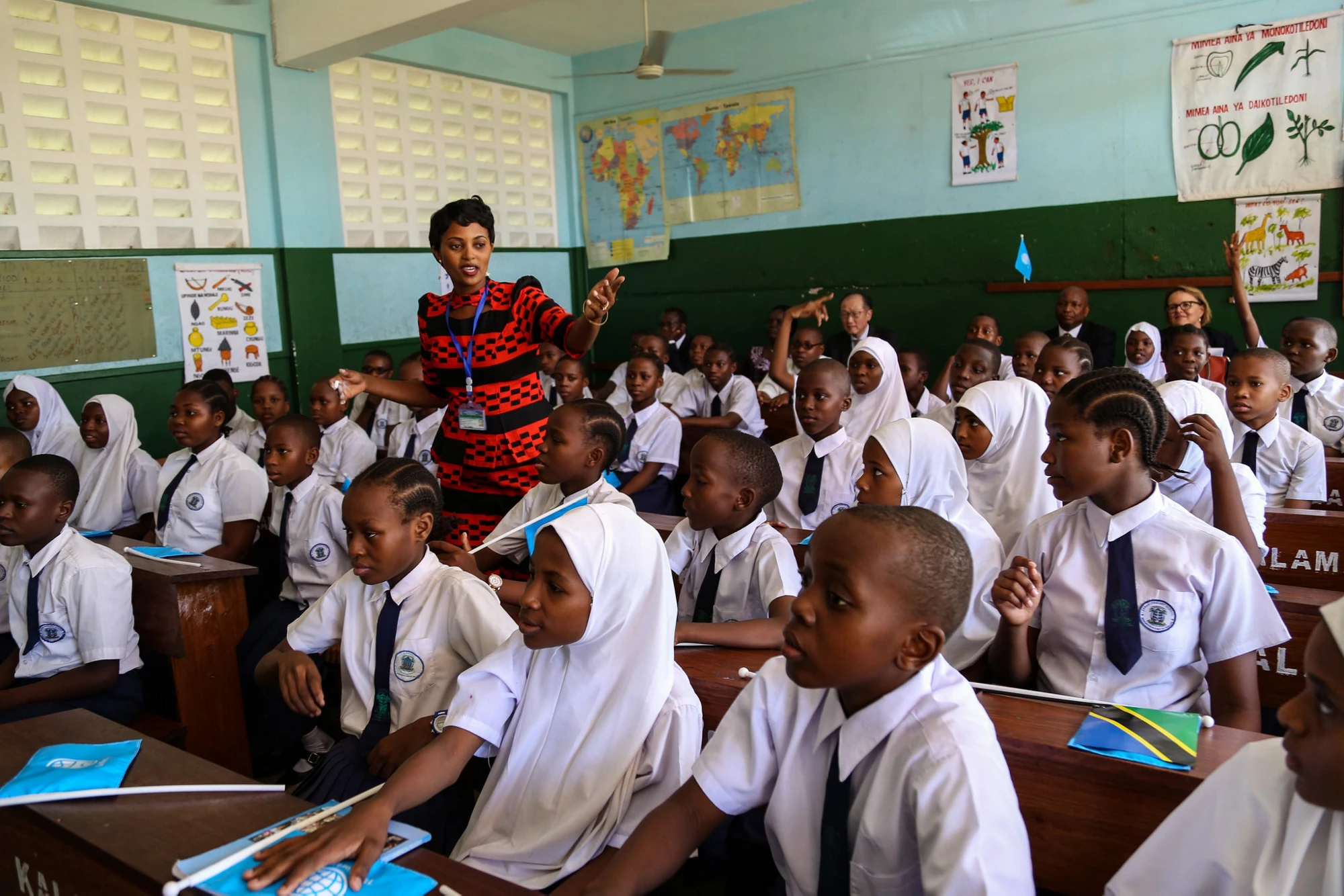
All schools are different. I’m not referring to the building, the number of students or teaching practices. I’m talking about the school’s spirit. When you walk into a good school, the building is often well-organized and clean. The students look busy and happy. You don’t see strict discipline; ideally, you see organized chaos.
When you see a well-functioning school, most likely, there is a good principal behind it. A leader who sets a vision for the school and sets clear objectives. Someone who creates the space that fosters teachers’ professional and personal development, and encourages students’ personal growth, creativity, and their own journey of discovery.
Running a school efficiently is a very difficult challenge. A principal must be a pedagogical leader to dozens of teachers: observing them in the classroom, evaluating institutional performance, and helping them get the professional development opportunities they need. Principals have to deal with hundreds of students and their personal and academic challenges. They need to respond to parents, each with their own expectations for the school. And principals also need to contend with the administrative and financial burdens imposed by the bureaucracy.
Are principals up to the challenge? Globally, not yet. Recent research by Nick Bloom from Stanford, Renata Lemos from the World Bank, Daniela Scur from Oxford, and other researchers, adapted the World Management Survey, which measures management capacity in the private sector, to public sector institutions. They developed a management index for schools, taking into account specific practices in operations (i.e., the use of differentiated instruction to accommodate the different student needs, and the use of information and evaluations to define a strategy); monitoring performance; setting meaningful targets which are tied to student outcomes; and people management (i.e., the ability to attract, retain, and provide support for teachers and staff). The instrument was applied to 1,800 schools in eight countries.
There’s a host of reasons behind the disparities in management quality in schools. On one hand, the managerial and leadership skills of the principal; on the other, the operating space that his or her environment may provide, the incentive structure, a well-defined chain of command, and clearly stated institutional objectives (an obvious one is that all students are in school to learn, but that is in many cases forgotten). I recall visiting a school in Ogun state, Nigeria, where the teacher was forced to shout to be heard above the din of a noisy generator. The generator was providing electricity to an empty computer room- clearly an example of dysfunctional school management. But I also remember a school I visited one Sunday in Jamestown, an old fishing village in Accra, Ghana. The principal, together with a group of students and volunteers, was painting the facilities, transforming the modest school into a magical space—the solar system on one wall, fruit on another, and parts of the human body on yet another. While both schools were grappling with limited resources, there was a vast difference in the administration quality and the level of school spirit.
The findings of the empirical analysis conducted by Bloom, Lemos, Scur, and others are clear. The highest management scores were observed in schools in the United Kingdom, Sweden, Canada, and the United States, followed by Germany, with a somewhat lower score, and Italy and Brazil. Much lower scores were reported in India. Looking within countries, another clear pattern emerged: in all cases, the average management capacity in the manufacturing sector was consistently higher than in the education sector. This is not surprising, since most countries fail to recognize that good management requires principals with the right leadership characteristics. Indeed, there is a large-scale failure to properly recruit principals and prepare them to carry out their challenging mandate.
Why does this matter? There is a strong correlation between greater management capacity and better learning outcomes. And many believe that management capacity is synonymous with autonomy. There is extensive research in developed countries documenting the link between greater autonomy and improved learning. In the United Kingdom, for example, autonomous public schools (the “academies’) have better learning outcomes than other government schools.
But this is not due to autonomy itself; better performance comes about by how autonomy is used. There are at least two key factors to improving school management: First, principals should have a clear understanding of who they are accountable to and their performance has to be effectively assessed. And second, principals must have latitude to exercise their leadership, feeling empowered to support and guide teachers, as well as identify their staff's development opportunities needs. Principals need a clear understanding of their responsibility of managing their human resources, to deploy them effectively to meet the challenges inherent in educating children and youth with a broad spectrum of talents, interests, and abilities.
That is why greater autonomy yields good results in high-income countries, but not in poorer ones. And it explains why there is no link between management quality and the various management models—i.e., public, charter or private schools. Similarly, there is no clear relationship between the model of management and student learning outcomes. What matters is effective management.
However, effective management doesn’t just mean empowering principals, giving them decision-making powers, clear objectives and accountability. Principals are not merely classroom teachers taking another step up in a successful career ladder. It also demands a merit-based process to select competent professionals with the management and leadership skills needed. And they have to be trained in such areas as human resources management, use of financial resources, and pedagogical leadership. That is the challenge many countries now face.
England established the National College for School Leadership in the late 1990s to strengthen the professional development of principals (now called the College for Teaching and Leadership after it merged with the Teaching Agency). Aspiring principals first enroll in the Future Leaders program, where they receive mentoring and leadership opportunities over the course of four years before they can assume a school leadership position. Under the English system, principals also have less administrative responsibilities, which enables them to undertake higher value-added activities.
New measures to improve school quality can only be implemented if schools are led by leaders and managers who are committed to the education and well-being of their students. There are thousands of schools with excellent principals. But there are also thousands of schools in need of improvement. All schools need an excellent principal and excellent leadership, because all schools have children who deserve a better future.
Find out more about World Bank Education on our website and on Twitter.


Join the Conversation